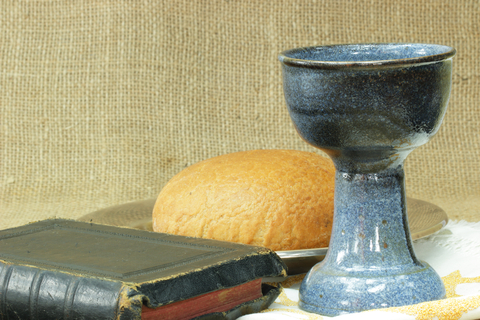
Around noon on October 31, 1517, Martin Luther nailed a Latin poster onto the door of the Castle Church, commonly used in Wittenberg as the public notice-board. Luther’s poster was an invitation to a debate on the ninety-five topics listed there. The debate was never held. But within the matter of a few months, Luther’s Ninety-Five Theses was being read and debated by thousands of people all over Europe. The Protestant Reformation had begun.
South of Wittenberg in the Swiss city of Zürich, Ulrich Zwingli began his public ministry there on January 1, 1519. His preaching had so impressed some pilgrims to the Abbey of Einsiedeln where Zwingli was the chaplain, that he was offered a position as the people’s priest at the Great Minster in Zürich. At the time, Zürich was a republic of about 7,000 people with a reputation of being both a prosperous and licentious city. Church historian, R. Tudor Jones, cited a comment by another Swiss reformer, Heinrich Bullinger, who said Zürich was to Switzerland what Corinth was to Greece.
Zwingli began his ministry with a series of sermons that expounded the New Testament, beginning with the gospel of Matthew. Although this would not seem radial or innovative to a modern congregation, it was at that time. Especially as Zwingli proposed that the meaning of a Biblical text was best explained by the Bible itself. Reading Luther’s books in 1519 was a great help, assuring him that he was not alone in what he preached and taught. Zwingli would develop an evangelical doctrine that agreed in most essentials with that of Martin Luther—with what became one major exception. R. Tudor Jones said:
Both reformers were agreed on the importance of justification by faith alone and the authority of the Bible, but disagreed about how precisely biblical standards were to be applied in detail. And both disagreed on the question of Christ’s presence in the Eucharist. In Zwingli we have the roots of the ‘Reformed’ tradition that was to be developed and enriched by Calvin.
In 1529, there was a conference arranged in Marburg between German reformers, led by Luther and Swiss reformers led by Zwingli. There was a surprising measure of agreement between the two parties—except on the Eucharist. Lutherans insisted on the physical presence of Christ in the sacrament, but agreed that whatever its nature, apart from faith it was of no value. Zwingli agreed that there was something more than just a memorial to the celebration of communion, because there was a spiritual communion with Christ.
The Lutherans proposed a formula of concord, which the Swiss rejected because it did not explicitly state that the presence of Christ in communion was only spiritual. Luther was ready to accept a Swiss proposal to accept each other as Christian brothers and practice intercommunion, until Melanchthon reminded him that this proposed union would close the door to any hope of reconciliation with the Catholics. In contrast to a belief that the bread and wine of the sacrament were a sign or a figure, Catholics held to transubstantiation, that the bread and the wine used in the sacrament of the Eucharist was in actual reality the body and blood of Christ. The conference ended without an agreement.
Zwingli was later killed on October 11, 1531 in a battle against Catholic forces. His body was burned as a heretic. According to Roland Bainton, Luther saw Zwingli’s death as a judgment for taking up the sword on behalf of the gospel. The tragedy here is that despite being so close on all other matters of theology, what was supposed to be a celebration of the unity of believers in Christ, became a stumbling block for these two Protestant Reformers.
In First Corinthians, Paul pointed to how those who partook of the cup and the bread in the Eucharist participated in the body of Christ: “Because there is one bread, we who are many are one body, for we all partake of the one bread” (1 Cor. 10:17). When believers jointly participate in the one bread, they witness to their unity with one another in the benefits of the death and resurrection of Christ. According to Ronald Fung in The Dictionary of Paul and His Letters, “Partaking of the cup and the bread in the eucharist means participation in the blood and the body of Christ (1 Cor 10:16), that is, in the benefits of his death and in fellowship with him.”
In 10:16 Paul asked two rhetorical questions that he expected his readers would answer affirmatively: the cup for which we give thanks and the bread which we break, are they not participation in the body and blood of Christ? So they should not partake of both the table of the Lord and the table of demons (1Cor 10:21). At least in the Temple to Asclepius in Corinth, there were dining rooms used for social and religious communal meals (see Ancient Healing Rituals). So the Corinthians were faced a dilemma. They had to choose—either partake of the cup and table of the Lord, or dine with the idolaters in the temple of an idol. They couldn’t do both. As Simon Kistemaker said in his commentary on First Corinthians:
When the Corinthians drink from the cup and eat of the bread during the Lord’s Supper, they indeed have communion with Christ. Because they have fellowship with Jesus Christ, they ought to have nothing to do with idols. No one can serve two masters (Matt. 6:24; Luke 16:13).
The unity Paul argued for here within his use of the body metaphor (we who are many are one body), is more than simply the unity of Christian believers who are members of the same church. It was for the solidarity of believers “as one body in union with Christ.” When Christians share the Lord’s Supper, they become one with each other and with Christ. Richard Baxter said of the Lord’s Supper:
Nowhere is God so near to man as in Jesus Christ, and nowhere is Christ so familiarly represented to us as in this holy sacrament. Here we are called to sit with him at his table, as his invited welcome guests; to commemorate his sacrifice, to feed upon his very flesh and blood; that is, with our mouths upon his representative flesh and blood, and with our applying faith upon his real flesh and blood, by such a feeding as belongs to faith.





